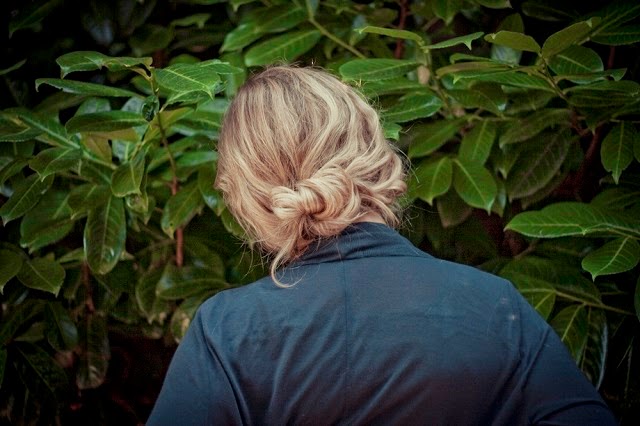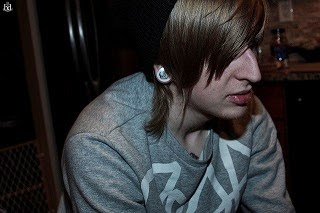
|
| [1] |
How does hair bleach work?
Hair bleach works through a chemical process called oxidation, and this is a result of the oxygen that is released when peroxide and bleach powder are combined and applied to hair.
This means that for bleach to actually work, it needs to be mixed with developer. The strength of developer is the predominant force behind the strength of the bleach itself, and you can easily mix it in a way that makes it mild for subtle lightening or stronger for intensive lightening.
Developer volume
The volume of developer that is mixed with bleach refers to the concentration of hydrogen peroxide in the developer solution and how much oxygen it produces. In this sense, 20 vol developer is twice as strong as 10 vol developer as it liberates twice as much oxygen.
As well as giving you a rough idea of how strong the developer is, the volume of developer also gives you a good idea of the results you can achieve by using a particular strength with your bleach powder.
| Lightening | Generic powder | Salon powder |
|---|---|---|
| 1 Level | 10 vol | 5 vol |
| 2 Levels | 15 vol | 10 vol |
| 3 Levels | 20 vol | 10 vol - process longer |
| 4 Levels | 30 vol | 15 vol |
| Up to 7 levels | Use salon bleach | 20 vol - process longer |
Using the chart above can help you visualise the lightening power of each strength of developer when used in bleach. The developer volumes listed for generic power are for generic brands without boosters or lightening enhancers. Only use 30 vol developer on scalp if recommended by the manufacturer.
Salon powders, however, are much stronger. The above reference guide can be used for high quality powders like Igora Vario, Indola Rapid Blonde, Loreal Infinie Platine, Loreal Platinum Plus, and Wella Blondor Multi Blonde.

|
| [2] |
Mixing ratio
Hair bleach powder needs to be mixed with developer in order to work, but the mixing ratio is just as important as the developer volume used.
Whilst most lighteners require a 1:2 ratio of powder to developer for the best results, you have a little leeway either way if you need a thicker or thinner consistency for the results you want without much effect on the lightening. Just don't take too much liberty with this or it may not lighten as well.
Many salon brands have a much different ratio though, like Loreal's Infinie Platine, which has a ratio of 1:3. You will need to be aware of your particular brand's own mixing ratio to use it properly and get the best results.
Sectioning hair and applying bleach
When learning how to bleach your hair at home, it is important that you are careful to section your hair out rather than just apply bleach in a haphazard manner. Proper sectioning is paramount to beautiful, even lightening.

|
| [3] |
To section out your hair for bleaching, part it directly down the middle from the front of your head to the back of your neck so that it has been parted in half. Part it in half once more after this from ear to ear and you'll end up with four quadrants.
Each quadrant needs to be clipped together to keep the hair separate while you're working on it. Bleach is applied to one quadrant at a time, layer by layer and this makes it easy and very quick to completely cover your hair without patchiness or other problems.
Development
If you noticed that the developer chart contains references to processing the bleach for a longer time, this is where this comes into play. A certain volume of developer allows the bleach to lighten hair, but time is another factor that is important in gauging how well it lightens.
Whilst the maximum processing time is about 45 - 55 minutes for most brands of hair bleach, you won't always need to bleach for this long. Longer processing with the same volume of developer allows for increased lightening without actually increasing the strength of developer.
When preparing the bleach, choose the developer volume required for the lightening you want, and process only for as long as it takes to reach that level.
Rinsing
After processing, bleach needs to be rinsed thoroughly with water. This should be followed up with a gentle shampoo to ensure that any remaining traces of the product have been completely removed.
Lighteners are very drying on hair and this needs to be treated first by using a deep conditioner to kick start a process of moisture replacement that takes about a week before your hair begins to feel completely normal again. Until this moisture balance is returned, your hair can feel dry, rough, and be more prone to frizz and split ends.

|
| [4] |
After this, allow your hair to rest for a week. If you need to dye or tone your hair immediately after bleaching, this is fine to do as long as your hair is in good condition, but leaving it for a week can help alleviate any porosity problems that lead to darker than intended results or patchiness.
You can also start using protein treatments immediately after shampooing the bleach out, and this can be a great way to keep your hair healthy and get it back to its normal condition quicker. It will also help prevent porous hair and breakages.
More information:
- How to go from black to blonde hair - Find out how to properly lighten and tone dark hair to blonde...
- How to repair hair - Tips, products, and treatments for stressed, damaged hair. Find out how to repair damage and return your hair to good condition...
- How to use a bleach bath - Find out how to use bleach for mild lightening or colour correction...
Planning to bleach your hair and have more questions about how to bleach your hair at home? Leave a comment for tailored advice...
No comments:
Post a Comment